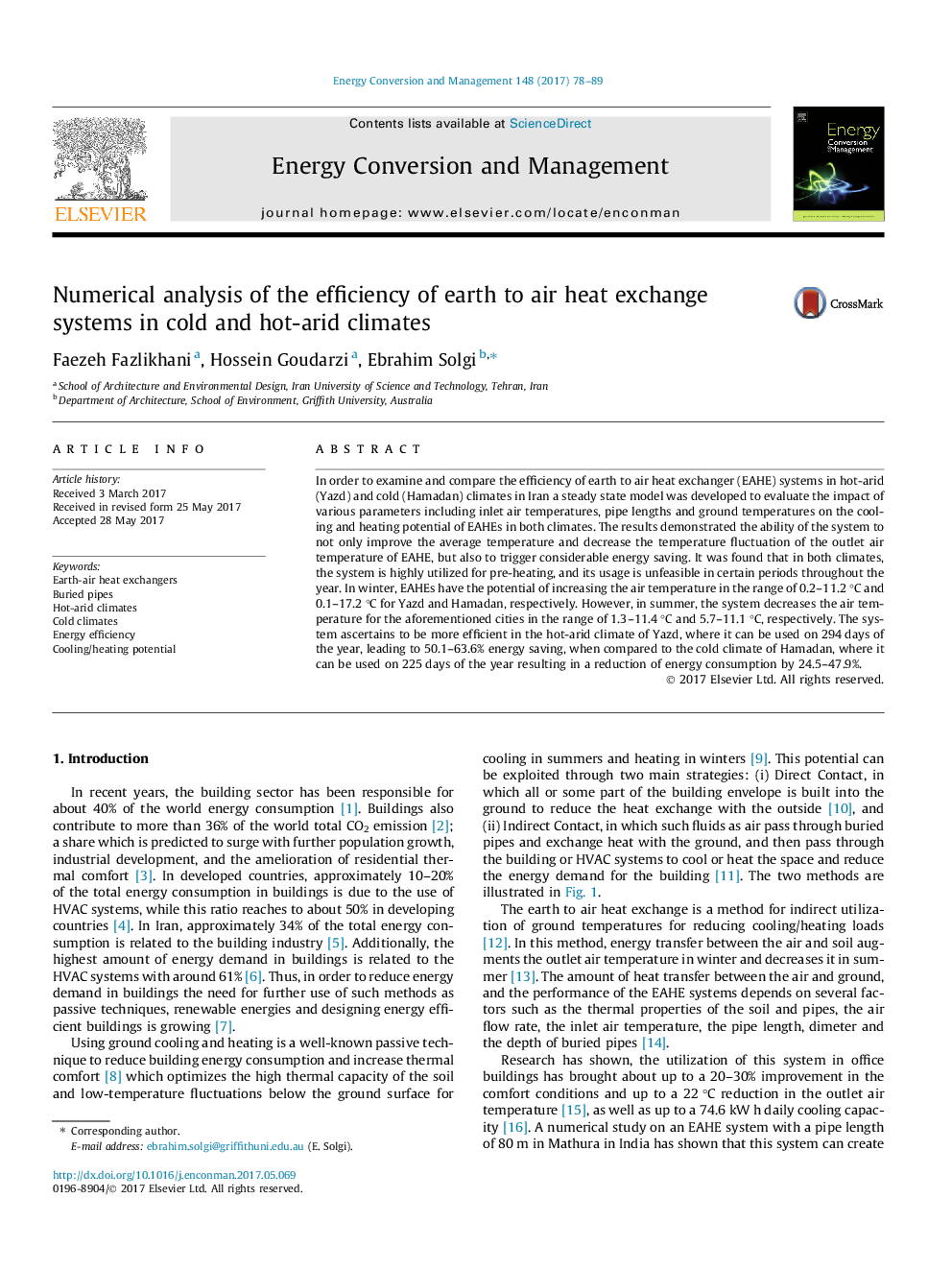| Article ID | Journal | Published Year | Pages | File Type |
|---|---|---|---|---|
| 5012520 | Energy Conversion and Management | 2017 | 12 Pages |
Abstract
In order to examine and compare the efficiency of earth to air heat exchanger (EAHE) systems in hot-arid (Yazd) and cold (Hamadan) climates in Iran a steady state model was developed to evaluate the impact of various parameters including inlet air temperatures, pipe lengths and ground temperatures on the cooling and heating potential of EAHEs in both climates. The results demonstrated the ability of the system to not only improve the average temperature and decrease the temperature fluctuation of the outlet air temperature of EAHE, but also to trigger considerable energy saving. It was found that in both climates, the system is highly utilized for pre-heating, and its usage is unfeasible in certain periods throughout the year. In winter, EAHEs have the potential of increasing the air temperature in the range of 0.2-11.2 °C and 0.1-17.2 °C for Yazd and Hamadan, respectively. However, in summer, the system decreases the air temperature for the aforementioned cities in the range of 1.3-11.4 °C and 5.7-11.1 °C, respectively. The system ascertains to be more efficient in the hot-arid climate of Yazd, where it can be used on 294 days of the year, leading to 50.1-63.6% energy saving, when compared to the cold climate of Hamadan, where it can be used on 225 days of the year resulting in a reduction of energy consumption by 24.5-47.9%.
Related Topics
Physical Sciences and Engineering
Energy
Energy (General)
Authors
Faezeh Fazlikhani, Hossein Goudarzi, Ebrahim Solgi,
